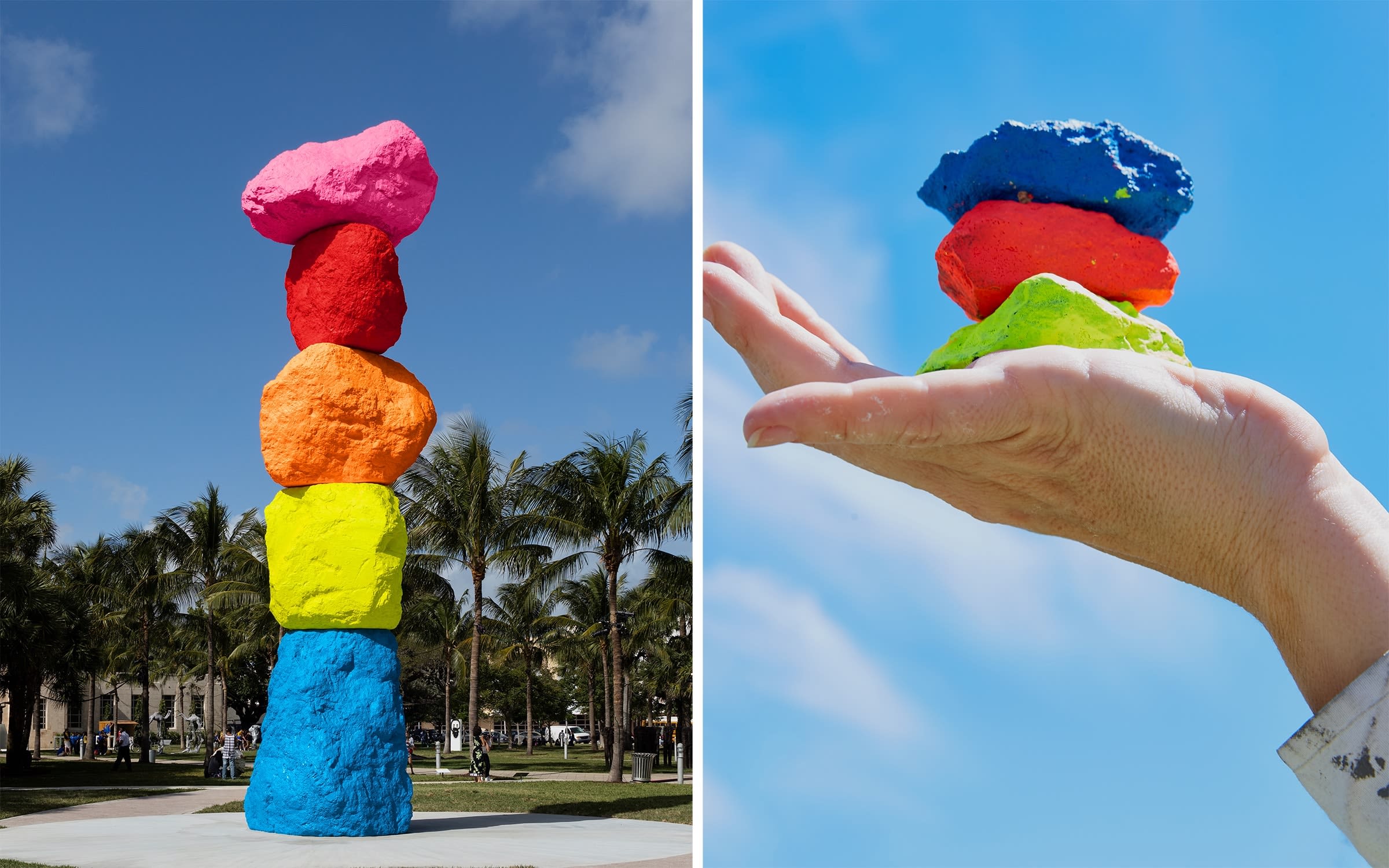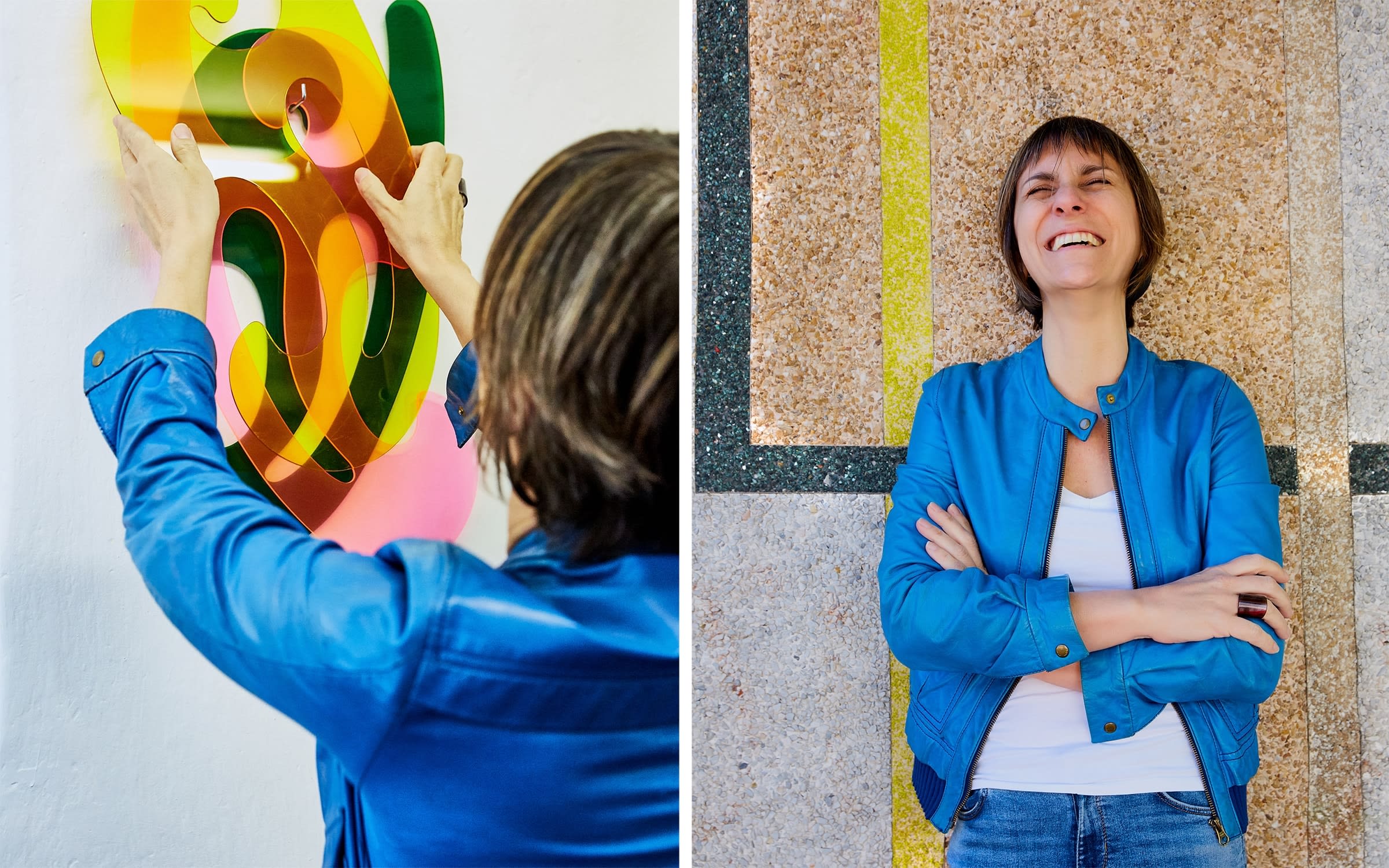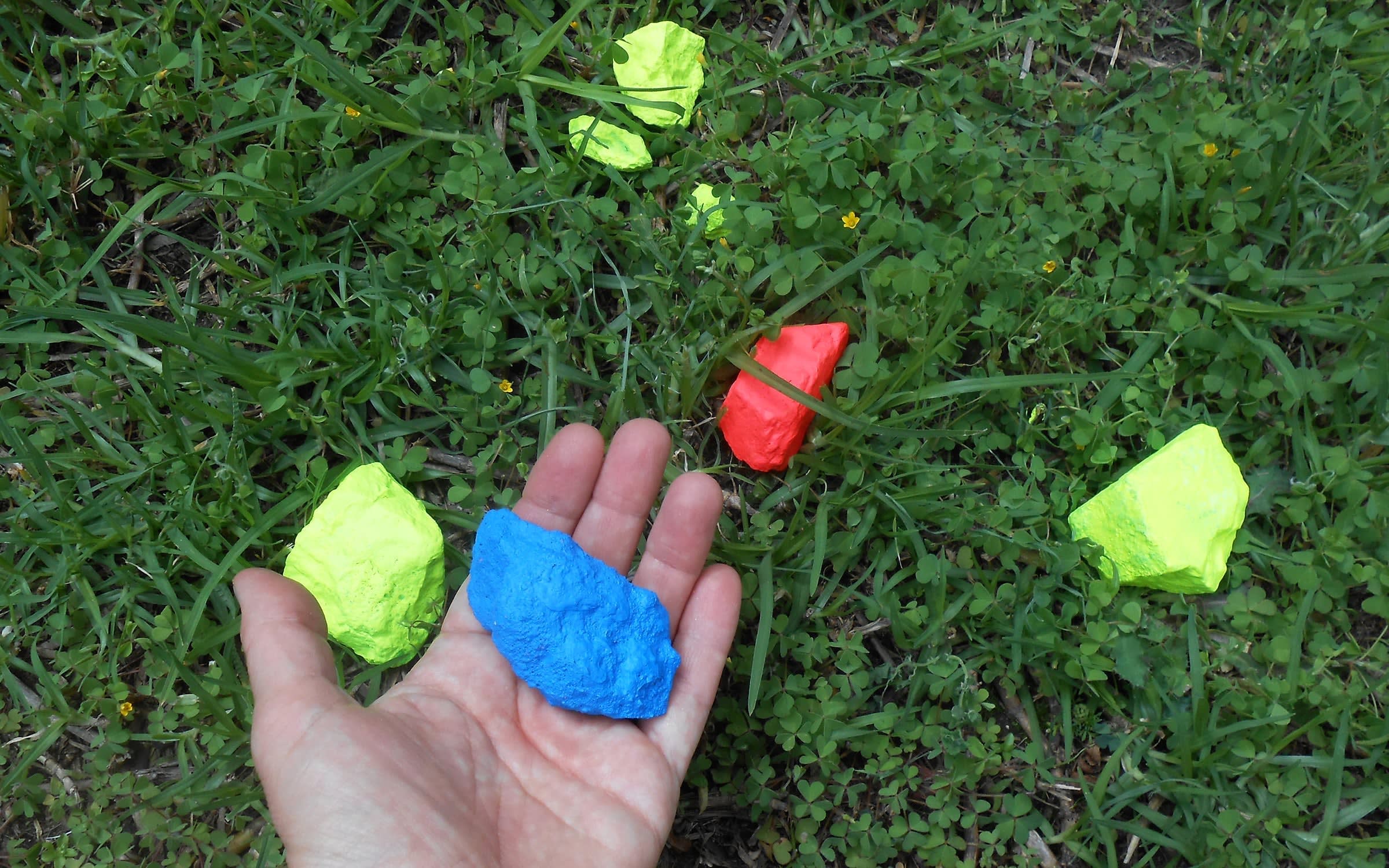Artist Marcela Sinclair has an appetite for deconstruction
Exploring how the spaces we inhabit shape our daily routines, the Argentine artist invites us to reconnect to the innocence of childhood and imagine a different kind of future
登入並訂閱巴塞爾藝術展專題故事
In the gentrifying Buenos Aires neighborhood of Villa Crespo, the mundane and the marginal live side by side, with edgy galleries and avant-garde boutiques sprouting up alongside auto-body shops and local soccer clubs. From a garage space with a big double door that opens directly onto the street, artist Marcela Sinclair produces conceptual yet humorous works that, by engaging the imagination, challenge our automatic assumptions.
A large, vintage drafting board that belonged to her grandfather, an architect, is the starting point for all of her works, which center on spatial interventions that range from the subtle to the dramatic. But when she was invited by curators Florencia Battiti and Diana Wechsler to create a site-specific piece in Collins Park during Miami’s peak art moment of the year, her first reaction – after accepting – was to go straight to Google Images.

Her search for “Collins Park Miami” yielded one image after another of Swiss artist Ugo Rondinone’s vibrant mega-sculpture Miami Mountain (2016): as seen from below, from above, up close, and from a distance. Inspiration surged from her computer screen onto her drafting board, in the form of sketches that would deconstruct that massive work – towering, monumental, perhaps even authoritarian – into something social, friendly, and playful, within reach of anyone. The result is Derrame, or Spill, consisting of thousands of small, palm-sized stones painted in the same five colors as Rondinone’s piece, radiating horizontally outward. Visitors will be encouraged to appropriate the work for themselves, manipulating the stones in any way they choose.
Conceiving a piece for Collins Park sight unseen was a new challenge for Sinclair, since most of her interventions are tied to a specific place, taking into account the people who occupy it and how they use it. With an acute awareness of human behavior, gleaned from her years working in different customer-service positions, the artist proposes scenarios that shift the experience of daily life, even if only on the smallest scale.
Such is the spirit that gave rise to El detalle inútil (The Useless Detail) (2013) in the courtyard of the rectorate of the Universidad Nacional de La Plata. Amid the soaring columns and strict geometry, Sinclair scheduled actors to perform a repertoire of minimal, nearly imperceptible actions – launching paper airplanes from the upper arcade, blowing bubbles, or, more disturbingly, lying face-down on the ground – that would unfold for passers-by to stumble upon. Or not: Sinclair was clear about the validity of these actions, whether or not they received an audience. As curator Berenice Gustavino writes of the piece, ‘[Sinclair] schedules the unforeseen encounter. The work takes place in the narrow limit that goes from the delicate to the imperceptible, and takes care of both the risk of the redundancy as well as the total disappearance.’
Though El detalle inútil involved performers, Sinclair rejects the label ‘performance artist’ – or any label, for that matter. ‘For me, performance carries a strong component of creating a scene for others to observe: like a stage where the audience is, to some extent, left out. And that format isn’t really my style,’ she says. If anything, she takes her conceptual cues from the Chilean-American artist Gordon Matta-Clark, whose ‘building cuts’ inspired her own series of sliced furniture pieces. ‘Matta-Clark defined himself as an anarchitect,’ she notes. ‘I like that. I try to bring things from him into my work.’ But Sinclair’s deconstruction, as she describes it, has more to do with creating space for energy to flow. ‘For me, the key is to propose something that allows for a change in the pH of things, something that generates a possibility of freedom. It’s not about making a hole and setting up a neon sign with an arrow that says “walk through here.” Instead, I like to think that something transformative happens when someone interacts with a work of mine,’ she says. ‘The important thing is for us to take ownership of our surroundings using the tools already at our disposal.’
Growing up in Buenos Aires in the 1970s, everyone in Sinclair’s family was handy at something. Being able to do things like sewing or cooking for oneself was prized for both sexes. Skills that Sinclair acquired in her childhood carry over into her craft today, whether she is slicing into photographs or furniture or shrouding sculptures with sewn fabrics. She makes use of manual trades to create worlds, and her workshop is stocked with rulers, triangles, and cutting tools. Her forms are heavily influenced by geometry and linearity, and though this recalls the greats of Latin American abstraction like Lygia Clark and Hélio Oiticica, Sinclair traces her passion for straight lines back to her mother, a math teacher.
According to Javier Villa, a curator at the Museo Moderno in Buenos Aires, ‘Sinclair is part of a generation of Argentine artists – Christina Schiavi, Magdalena Jitrik, or Ad Minoliti, just to name a few – who begin their practice researching and intervening on the canon of modern abstraction, which is so central for the narratives of Latin American art of the 20th century. They address this modern, centralist, and patriarchal heritage with the aim of disarming it and building other possible futures.’
Sinclair studied art at Argentina’s most prestigious plastic-arts academy, the Escuela Nacional de Bellas Artes Prilidiano Pueyrredón, and after graduating, she took a few courses in art history and theory at the Universidad de Buenos Aires. She taught for a number of years and, in her own words, was a latecomer to full-time artmaking. ‘It took me a long time to acknowledge myself as an “artist,”’ she says. Even now, many of her works contain a jokey ambivalence about the art market’s system for assigning value: take, for example, the intricate necklaces she displayed in jewel cases at Mite Galería in December 2018 – which upon closer inspection were strung together from supermarket pasta.

Although her age – 51 – might have landed her in another bracket, Sinclair prefers the energy of a younger cohort. She shares a workshop in UV Estudios, an experimental project space that is home to an international hub of young artists stirring up the local scene, including the Básica TV collective, Lolo & Lauti, and Maruki Nowacki, among others. She also contributes to El Flasherito, an art publication launched by Leo Estol, Andrés Aizicovich and Liv Schulman, and to CIA, an art school and residency program founded by Judi Werthein in collaboration with Roberto Jacoby and Graciela Hasper (also featured in ‘Disruptions’). ‘In artistic practice, there is no work invented from nothing,’ says Sinclair. ‘We make art as a community of artists and non-artists. There is no individual value.’

True to her roots as a teacher, in Miami Sinclair will partner with Kathryn Mikesell’s Fountainhead Residency to involve high school and college students in Derrame, carrying out small interventions that she insists, as in El detalle inútil, are not intended to be performative but rather to incite the public to play. What they do is up to them: people may carry the stones away, leave them on the beach, make little piles – ‘many things go through my head,’ she says. But in her best-case scenario, the stones will disappear, pocketed by the public.
Victoria Schirinian is a Buenos Aires–based writer and editor. For more information on Marcela Sinclair and the Art Basel Cities: Buenos Aires exhibition ‘Disruptions’, on view December 3–8, 2019, in Collins Park, click here.
Top image: Marcela Sinclair in her studio with an artwork in progress. Photo by Mani Gatto.

